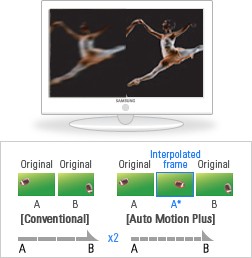 LCD’s Achilles’ heel has always been its ability to show fast moving images. Watching sports or fast-paced action films on an early LCD screen was terrible, thanks to the technology’s inadequate refresh rate. But just like introducing LED backlighting helped LCD display blacks better and more vivid colours, the introduction of 100Hz technology went a long way to eliminating the motion judder caused by fast-moving pictures.
LCD’s Achilles’ heel has always been its ability to show fast moving images. Watching sports or fast-paced action films on an early LCD screen was terrible, thanks to the technology’s inadequate refresh rate. But just like introducing LED backlighting helped LCD display blacks better and more vivid colours, the introduction of 100Hz technology went a long way to eliminating the motion judder caused by fast-moving pictures.
The first 100Hz LCD TV sets were shown off by Samsung back at CeBit back in 2006. Using advanced processing powers, the TV analysed each frame, and then created a composite frame in between the two to smooth over motion blurring. This essentially allows the picture to run at 100 frames per second, which translates to smoother pictures.
If that sounds a bit confusing you should check out this old post explaining the NTSC version of the same technology, 120Hz. The difference between the two is that NTSC traditionally runs at 60Hz, where as PAL runs at 50Hz, and so both techs simply double the frame rate. It’s argued though that 120Hz, which is a multiple of the 24p frame rate of movies, is therefore superior for watching films.
The simple rule today is that if you’re buying an LCD TV, make sure it has at least 100Hz technology on board. There’s another, newer version of the tech called 200Hz, but as a minimum requirement, having 100Hz is a must.
History of TV is Giz AU’s month-long look back at the development of the world-changing medium and its influence on our daily lives.